Date Fruit (Phoenix dactylifera L.) Cultivar Extracts: Nanoparticle Synthesis, Antimicrobial and Antioxidant Activities
Abstract
1. Introduction
2. Results and Discussion
2.1. Antimicrobial Effect of Date Extracts
2.2. Chemical Analysis of FADE, FHDE, and FZDE Extracts
2.2.1. GC–MS Analysis
2.2.2. Quantitative Determination of Total Phenolic, Flavonoid, and Tannin Contents
2.2.3. Antioxidant Activity
2.3. Effects of Combinations of FADE, FHDE, and FZDE Extracts with Commonly Used Antibiotics
2.4. Nano-Date Palm Fruit Extract Synthesis and Characterization
2.5. Antimicrobial Activity of the Synthesized NFHDE/AK Extract
3. Materials and Methods
3.1. Sample Collection
3.2. Extraction of Bioactive Material
3.3. Microorganisms
3.4. Antibacterial Effect of Date Extracts
3.5. Chemical Analysis of the Most Promising Extracts
3.5.1. GC–MS (Gas Chromatography–Mass Spectroscopy) Analysis
3.5.2. Phytochemical Estimation of Antioxidant Components (Total Phenolic, Flavonoid, and Tannin Content)
3.5.3. DPPH Free Radical Scavenging Assay
3.5.4. Total Antioxidant Capacity
Statistical Analyses
3.6. Effects of Combinations of the of the Most Promising Date Extracts with Commonly Used Antibiotics Assessed Using the Disk Diffusion Method
3.7. Physical Synthesis of Nanoparticles of the Most Promising Extract Using Ball-Milling Technique
3.8. Characterization of the Synthesized Nanoextract
4. Conclusions
Supplementary Materials
Author Contributions
Funding
Institutional Review Board Statement
Informed Consent Statement
Data Availability Statement
Conflicts of Interest
Sample Availability
References
- Ayaz, M.; Ullah, F.; Sadiq, A.; Ullah, F.; Ovais, M.; Ahmed, J.; Devkota, H.P. Synergistic interactions of phytochemicals with antimicrobial agents: Potential strategy to counteract drug resistance. Chem. Interact. 2019, 308, 294–303. [Google Scholar] [CrossRef] [PubMed]
- Kchaou, W.; Abbès, F.; Ben Mansour, R.; Blecker, C.; Attia, H.; Besbes, S. Phenolic profile, antibacterial and cytotoxic properties of second grade date extract from Tunisian cultivars (Phoenix dactylifera L.). Food Chem. 2016, 194, 1048–1055. [Google Scholar] [CrossRef] [PubMed]
- Alrajhi, M.; Al-Rasheedi, M.; Eltom, S.E.M.; Alhazmi, Y.; Mustafa, M.M.; Ali, A.M. Antibacterial activity of date palm cake extracts (Phoenix dactylifera). Cogent Food Agric. 2019, 5, 1625479. [Google Scholar] [CrossRef]
- Ghnimi, S.; Umer, S.; Karim, A.; Kamal-Eldin, A. Date fruit (Phoenix dactylifera L.): An underutilized food seeking industrial valorization. NFS J. 2017, 6, 1–10. [Google Scholar] [CrossRef]
- Al-Shwyeh, H.A. Date palm (Phoenix dactylifera L.) fruit as potential antioxidant and antimicrobial agents. J. Pharm. Bioallied Sci. 2019, 11, 1–11. [Google Scholar] [CrossRef] [PubMed]
- Martín-Sánchez, A.M.; Cherif, S.; Ben-Abda, J.; Barber-Vallés, X.; Pérez-Álvarez, J.Á.; Sayas-Barberá, E. Phyto-chemicals in date co-products and their antioxidant activity. Food Chem. 2014, 158, 513–520. [Google Scholar] [CrossRef] [PubMed]
- Taleb, H.; Maddocks, S.E.; Morris, R.K.; Kanekanian, A.D. Chemical characterisation and the anti-inflammatory, anti-angiogenic and antibacterial properties of date fruit (Phoenix dactylifera L.). J. Ethnopharmacol. 2016, 194, 457–468. [Google Scholar] [CrossRef]
- Hulla, J.E.; Sahu, S.C.; Hayes, A.W. Nanotechnology: History and future. Hum. Exp. Toxicol. 2015, 34, 1318–1321. [Google Scholar] [CrossRef]
- Baláž, P.; Achimovičová, M.; Baláž, M.; Billik, P.; Cherkezova-Zheleva, Z.; Criado, J.M.; Delogu, F.; Dutková, E.; Gaffet, E.; Gotor, F.J.; et al. Hallmarks of mechanochemistry: From nanoparticles to technology. Chem. Soc. Rev. 2013, 42, 7571–7637. [Google Scholar] [CrossRef] [PubMed]
- Nisar, M.; Qayum, M.; Shah, M.R.; Kaleem, W.A.; Ali, I.H.S.A.N.; Zia-Ul-Haq, M. Antimicrobial screening of Impatiens bicolor Royle. Pak. J. Bot. 2010, 42, 523–526. [Google Scholar]
- Murad, A.K.; Humaira, I.; Haroon, K.; Mohammmad, S.; Ikhtair, K. Antimicrobial activities of the whole plant of Cestrum nocturnum against pathogenic microorganisms. Afr. J. Microbiol. Res. 2011, 5, 612–616. [Google Scholar]
- Abuharfeil, N.M.; Sukhon, S.E.; Msameh, Y.; Sallal, A.-K.J. Effect of Date Fruits, Phoenix Dactyliferia L., on the Hemolytic Activity of Streptolysin O. Pharm. Biol. 1999, 37, 335–339. [Google Scholar] [CrossRef]
- Shakiba, M.; Kariminik, A.; Parsia, P. Antimicrobial activity of different parts of Phoenix dactylifera. Int. J. Mol. Clin. Microbiol. 2011, 1, 107–111. [Google Scholar]
- Hussain, M.I.; Semreen, M.H.; Shanableh, A.; Khattak, M.N.K.; Saadoun, I.; Ahmady, I.M.; Mousa, M.; Darwish, N.; Radeef, W.; Soliman, S.S.M. Phenolic Composition and Antimicrobial Activity of Different Emirati Date (Phoenix dactylifera L.) Pits: A Comparative Study. Plants 2019, 8, 497. [Google Scholar] [CrossRef] [PubMed]
- Farag, M.A.; Mohsen, M.; Heinke, R.; Wessjohann, L.A. Metabolomic fingerprints of 21 date palm fruit varieties from Egypt using UPLC/PDA/ESI–qTOF-MS and GC–MS analyzed by chemometrics. Food Res. Int. 2014, 64, 218–226. [Google Scholar] [CrossRef] [PubMed]
- Amira, E.A.; Behija, S.E.; Beligh, M.; Lamia, L.; Manel, I.; Mohamed, H.; Lotfi, A. Effects of the Ripening Stage on Phenolic Profile, Phytochemical Composition and Antioxidant Activity of Date Palm Fruit. J. Agric. Food Chem. 2012, 60, 10896–10902. [Google Scholar] [CrossRef]
- Barakat, A.Z.; Hamed, A.R.; Bassuiny, R.I.; Abdel-Aty, A.M.; Mohamed, S.A. Date palm and saw palmetto seeds functional properties: Antioxidant, anti-inflammatory and antimicrobial activities. J. Food Meas. Charact. 2020, 14, 1064–1072. [Google Scholar] [CrossRef]
- Shui, G.; Leong, L.P. Residue from star fruit as valuable source for functional food ingredients and antioxidant nutraceuticals. Food Chem. 2006, 97, 277–284. [Google Scholar] [CrossRef]
- Ibourki, M.; Azouguigh, F.; Jadouali, S.M.; Sakar, E.H.; Bijla, L.; Majourhat, K.; Gharby, S.; Laknifli, A. Physical Fruit Traits, Nutritional Composition, and Seed Oil Fatty Acids Profiling in the Main Date Palm (Phoenix dactylifera L.) Varieties Grown in Morocco. J. Food Qual. 2021, 2021, 5138043. [Google Scholar] [CrossRef]
- Mrabet, A.; Rodríguez-Gutiérrez, G.; Rodríguez-Arcos, R.; Guillén-Bejarano, R.; Ferchichi, A.; Sindic, M.; Jiménez-Araujo, A. Quality characteristics and antioxidant properties of muffins enriched with date fruit (Phoenix dactylifera L.) fiber concentrates. J. Food Qual. 2016, 39, 237–244. [Google Scholar] [CrossRef]
- Zihad, S.N.K.; Uddin, S.J.; Sifat, N.; Lovely, F.; Rouf, R.; Shilpi, J.A.; Sheikh, B.Y.; Göransson, U. Antioxidant properties and phenolic profiling by UPLC-QTOF-MS of “Ajwa”h, Safawy and Sukkari cultivars of date palm. Biochem. Biophys. Rep. 2021, 25, 100909. [Google Scholar] [PubMed]
- Bijla, L.; Ibourki, M.; Bouzid, H.A.; Sakar, E.H.; Aissa, R.; Laknifli, A.; Gharby, S. Proximate Composition, Antioxidant Activity, Mineral and Lipid Profiling of Spent Coffee Grounds Collected in Morocco Reveal a Great Potential of Valorization. Waste Biomass-Valorization 2022, 1–16. [Google Scholar] [CrossRef]
- Sanhueza, L.; Melo, R.; Montero, R.; Maisey, K.; Mendoza, L.; Wilkens, M. Synergistic interactions between phenolic compounds identified in grape pomace extract with antibiotics of different classes against Staphylococcus aureus and Escherichia coli. PLoS ONE 2017, 12, e0172273. [Google Scholar] [CrossRef]
- Abreu, A.C.; McBain, A.J.; Simões, M. Plants as sources of new antimicrobials and resistance-modifying agents. Nat. Prod. Rep. 2012, 29, 1007–1021. [Google Scholar] [CrossRef]
- Betts, J.W.; Wareham, D.W. In vitro activity of curcumin in combination with epigallocatechin gallate (EGCG) versus multidrug-resistant Acinetobacter baumannii. BMC Microbiol. 2014, 14, 172. [Google Scholar] [CrossRef]
- Chaqroune, A.; Taleb, M. Effects of Extraction Technique and Solvent on Phytochemicals, Antioxidant, and Anti-microbial Activities of Cultivated and Wild Rosemary (Rosmarinus officinalis L.) from Taounate Region. Biointerface Res. Appl. Chem. 2022, 12, 8441–8452. [Google Scholar]
- Alothman, O.Y.; Shaikh, H.M.; Alshammari, B.A.; Jawaid, M. Structural, Morphological and Thermal Properties of Nano Filler Produced from Date Palm-Based Micro Fibers (Phoenix dactylifera L.). J. Polym. Environ. 2021, 30, 622–630. [Google Scholar] [CrossRef]
- Saba, N.; Paridah, T.; Abdan, K.; Ibrahim, N.A. Preparation and Characterization of Fire Retardant Nano-Filler from Oil Palm Empty Fruit Bunch Fibers. BioResources 2015, 10, 4530–4543. [Google Scholar] [CrossRef]
- Shi, S.-F.; Jia, J.-F.; Guo, X.-K.; Zhao, Y.-P.; Chen, D.-S.; Guo, Y.-Y.; Zhang, X.-L. Reduced Staphylococcus aureus biofilm formation in the presence of chitosan-coated iron oxide nanoparticles. Int. J. Nanomed. 2016, 11, 6499–6506. [Google Scholar] [CrossRef]
- ISO 659–1988; Oilseeds—Determination of Hexane Extract (or Light Petroleum Extract), Called “Oil Content”. International Organization for Standardization (ISO): Geneva, Switzerland, 1988.
- Abbey, T.C.; Deak, E. What’s new from the CLSI subcommittee on antimicrobial susceptibility testing M100. Clin. Microbiol. Newsl. 2019, 41, 203–209. [Google Scholar] [CrossRef]
- Elshaer, E.E.; Elwakil, B.H.; Eskandrani, A.; Elshewemi, S.S.; Olama, Z.A. Novel Clotrimazole and Vitis vinifera loaded chitosan nanoparticles: Antifungal and wound healing efficiencies. Saudi J. Biol. Sci. 2021, 29, 1832–1841. [Google Scholar] [CrossRef] [PubMed]
- Hamza, H.; Elfalleh, W.; Nagaz, K. Date Palm Seed Oil (Phoenix dactylifera L.) Green Extraction: Physicochemical Properties, Antioxidant Activities, and Phenolic and Fatty Acid Profiles. J. Food Qual. 2021, 2021, 2394220. [Google Scholar] [CrossRef]
- Abdeldjabbar, M.; Messaouda, D.; Zhour, R.; Cheyma, B. Comparative Analysis of Total Phenolics, Flavonoid content and Antioxidant profile of date palm (Phoenix dactylifera L.) with different watering water from Oued Soufin Algeria. Asian J. Res. Chem. 2020, 13, 28. [Google Scholar] [CrossRef]
- Yang, J.; Chen, C.; Zhao, S.; Ge, F.; Liu, D. Effect of Solvents on the Antioxidant Activity of Walnut (Juglans regia L.) Shell Extracts. J. Food Nutr. Res. 2014, 2, 621–626. [Google Scholar] [CrossRef][Green Version]
- Foucquier, J.; Guedj, M. Analysis of drug combinations: Current methodological landscape. Pharmacol. Res. Perspect. 2015, 3, e00149. [Google Scholar] [CrossRef]
- Elnaggar, Y.S.; Elwakil, B.H.; Elshewemi, S.S.; El-Naggar, M.Y.; Bekhit, A.A.; Olama, Z.A. Novel Siwa propolis and colistin-integrated chitosan nanoparticles: Elaboration; in vitro and in vivo appraisal. Nanomedicine 2020, 15, 1269–1284. [Google Scholar] [CrossRef]
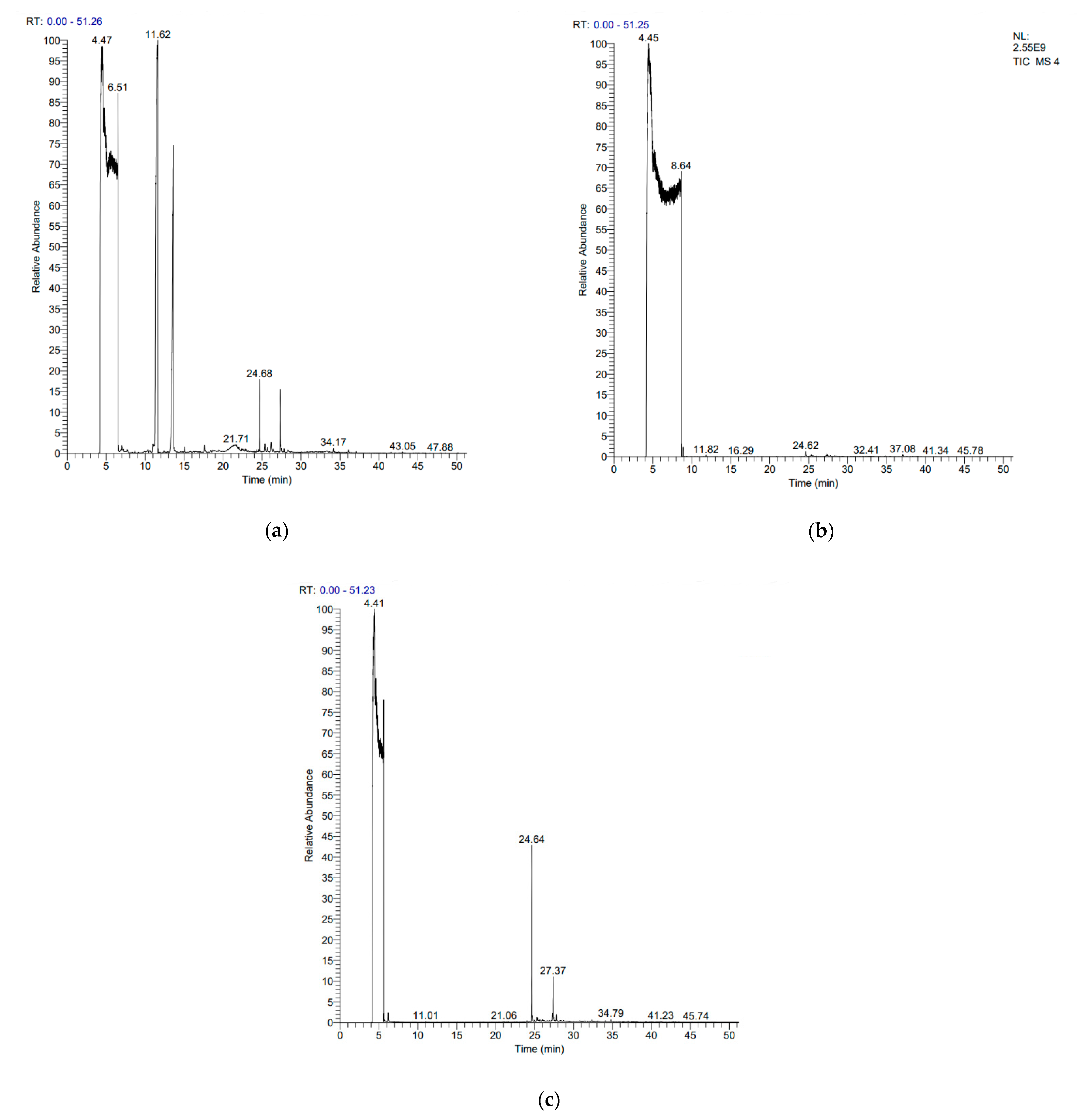

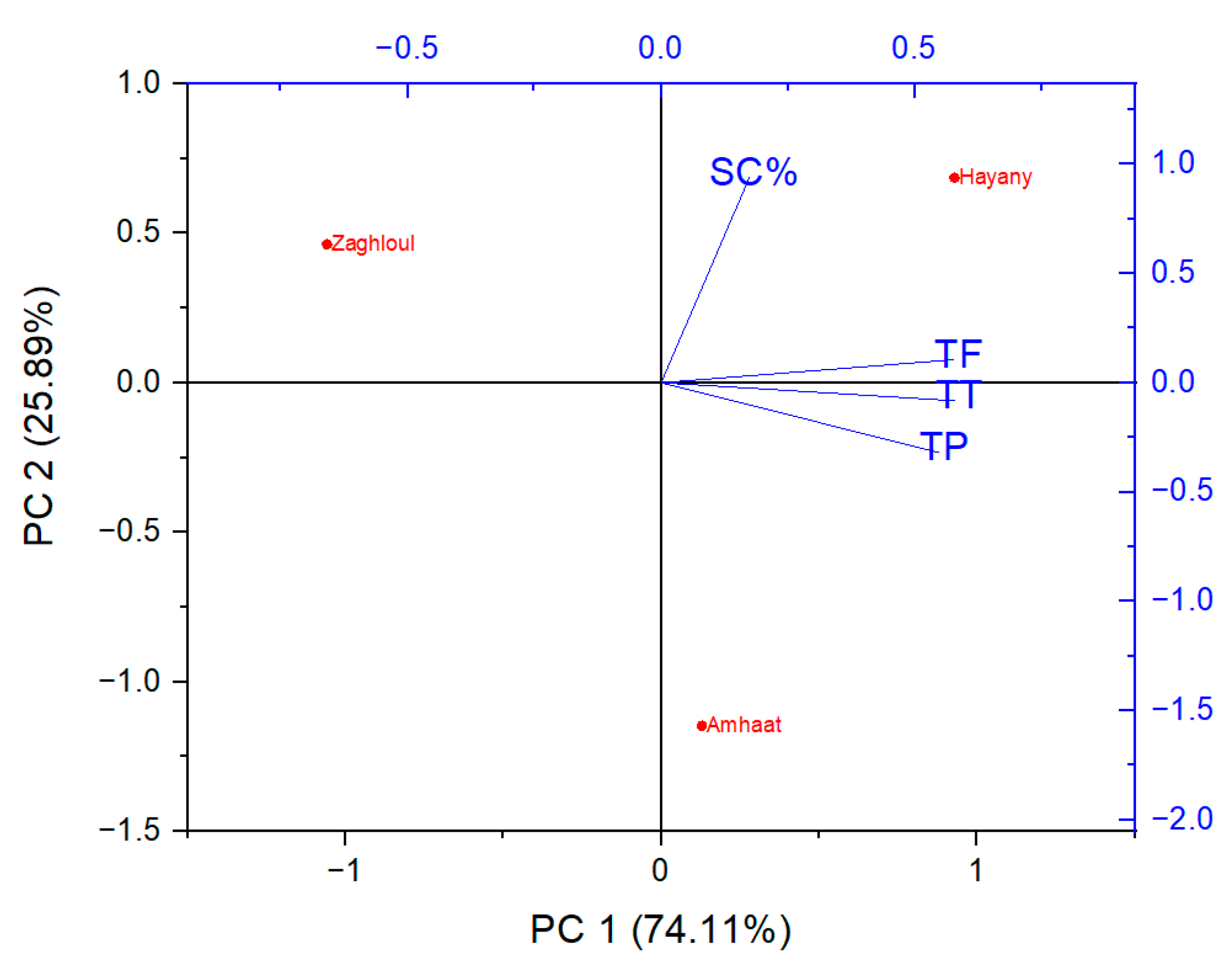
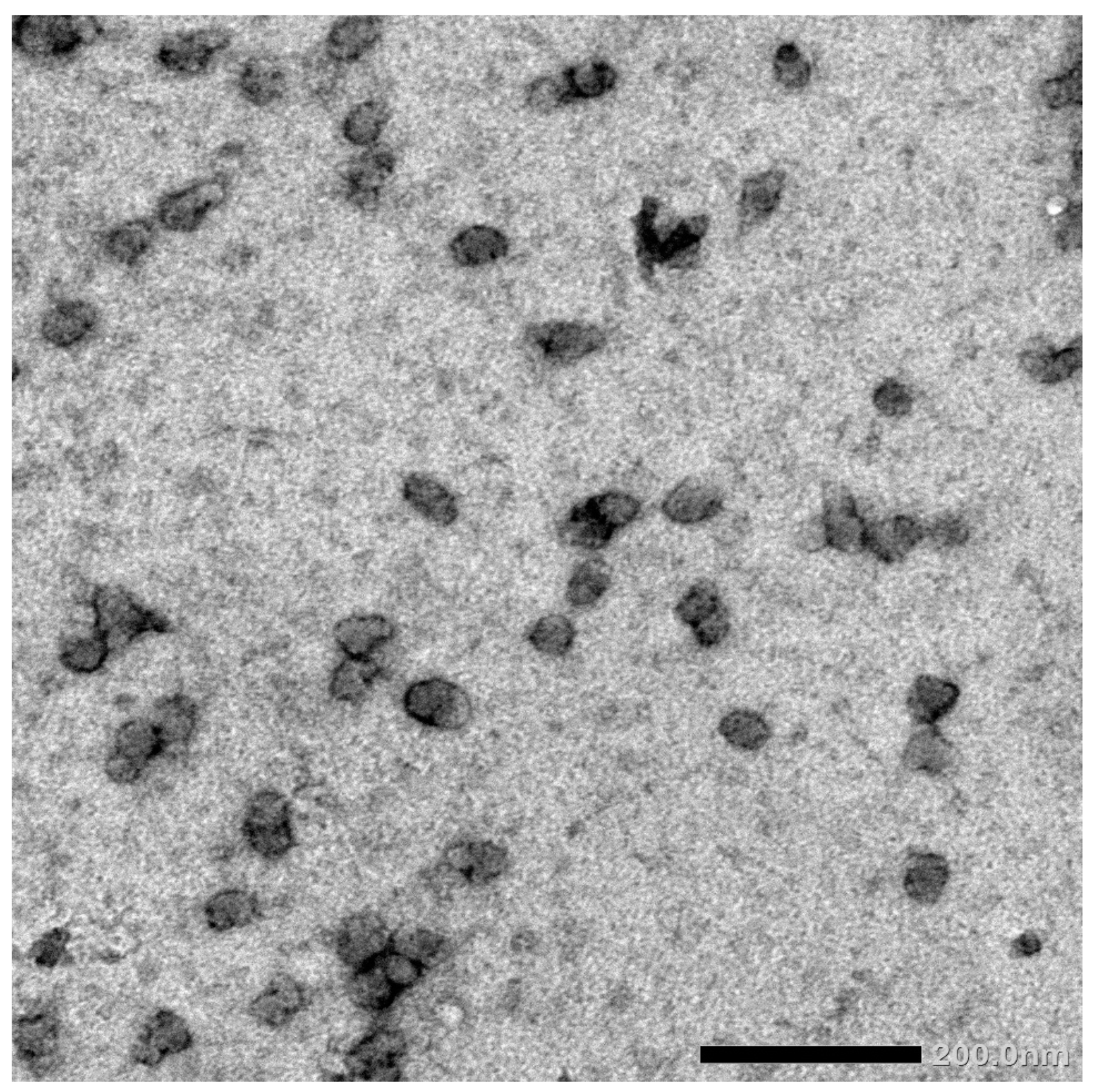
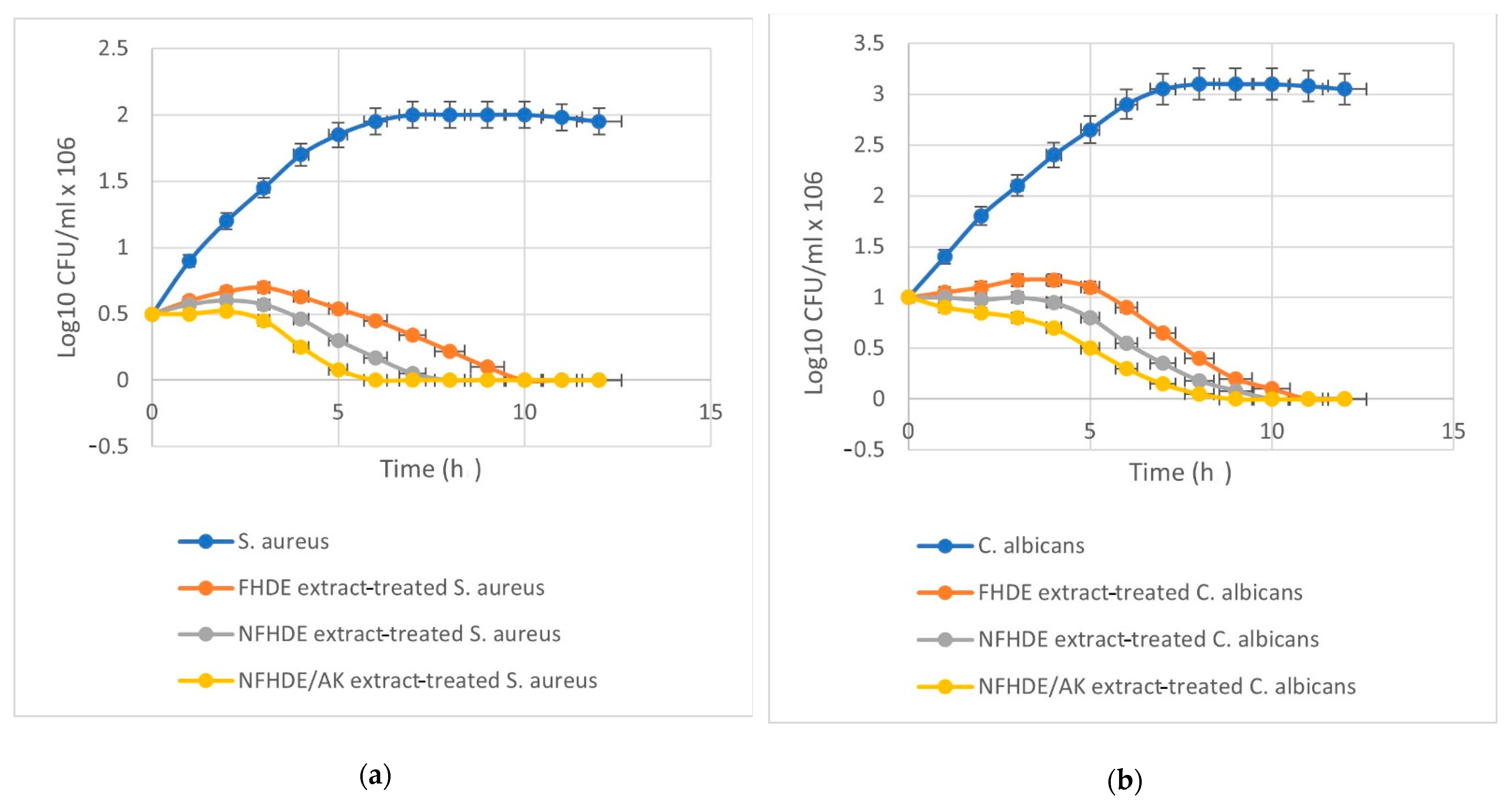
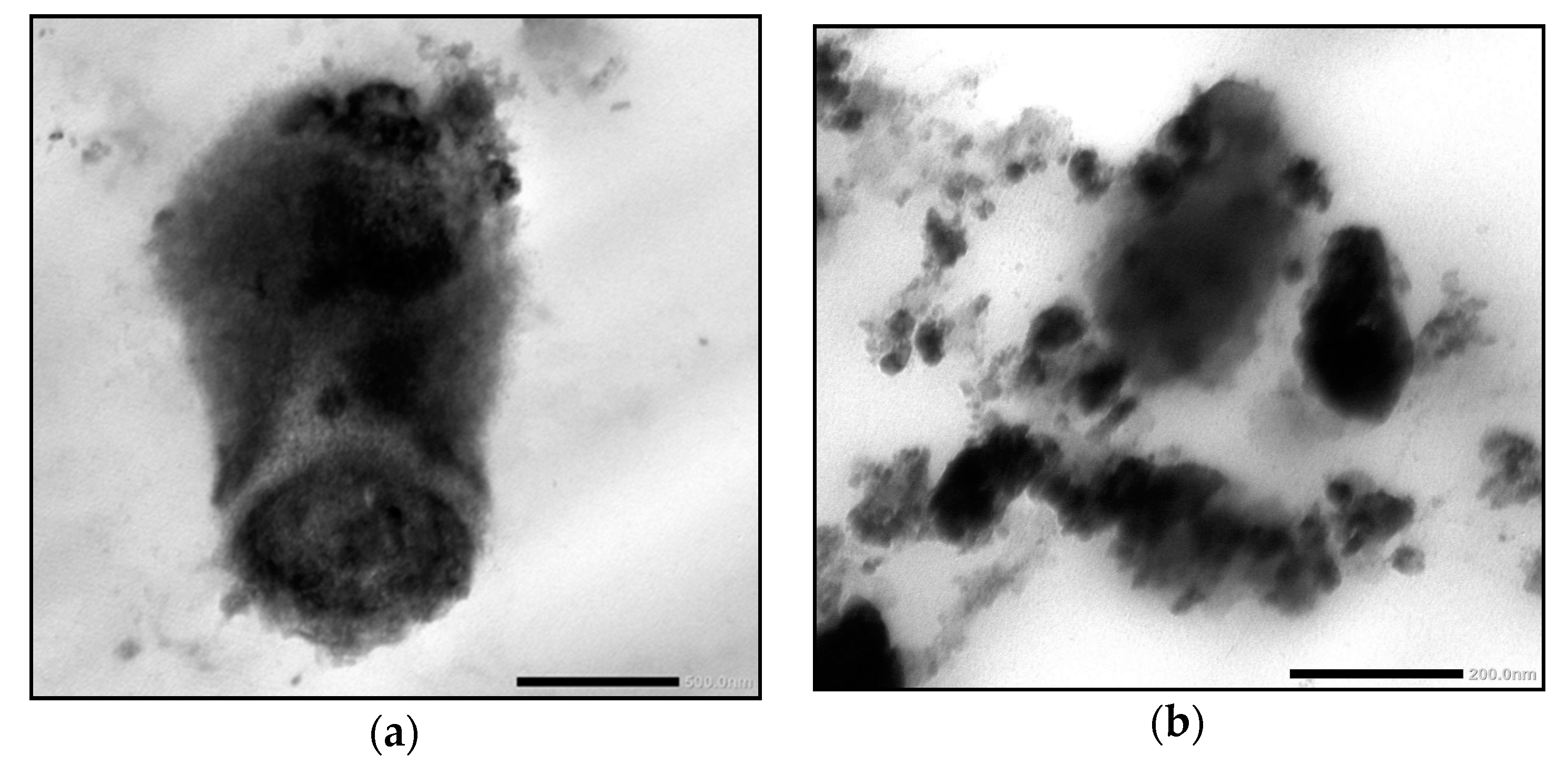
| Test Organism | Inhibition Zone Diameter (mm) ± SD | ||||||||||||||
|---|---|---|---|---|---|---|---|---|---|---|---|---|---|---|---|
| “Zaghloul” Date | “Hayany” Date | “Amhaat” Date | |||||||||||||
| Fruit | Dried Fruit | Epicarp | Dried Epicarp | Seed | Fruit | Dried Fruit | Epicarp | Dried Epicarp | Seed | Fruit | Dried Fruit | Epicarp | Dried Epicarp | Seed | |
| Pseudomonas aeruginosa | 10.5 ± 0.1 | 6.0 ± 0.3 | 6.0 ± 0.2 | 6.0 ± 0.5 | 6.0 ± 0.2 | 10.0 ± 0.4 | 9.0 ± 0.6 | 6.0 ± 0.3 | 6.0 ± 0.1 | 6.0 ± 0.5 | 15.5 ± 0.1 | 6.0 ± 0.2 | 6.0 ± 0.4 | 6.0 ± 0.3 | 6.0 ± 0.2 |
| Acinetobacter baumannii | 9.0 ± 0.4 | 6.0 ± 0.2 | 6.0 ± 0.1 | 6.0 ± 0.3 | 6.0 ± 0.1 | 13.0 ± 0.8 | 6.0 ± 0.3 | 6.0 ± 0.6 | 6.0 ± 0.1 | 6.0 ± 0.3 | 20.0 ± 0.1 | 6.0 ± 0.1 | 6.0 ± 0.1 | 6.0 ± 0.6 | 6.0 ± 0.1 |
| Proteus vulgaris | 11.0 ± 0.1 | 9.5 ± 0.2 | 8.0 ± 0.1 | 8.0 ± 0.2 | 7.5 ± 0.4 | 11.5 ± 0.6 | 9.5 ± 0.6 | 6.5 ± 0.8 | 6.5 ± 0.2 | 6.5 ± 0.5 | 19.0 ± 0.7 | 0.6 ± 0.4 | 6.0 ± 0.3 | 6.0 ± 0.8 | 6.0 ± 0.4 |
| Staphylococcus aureus | 11.0 ± 0.1 | 9.5 ± 0.3 | 6.0 ± 0.3 | 6.0 ± 0.1 | 6.0 ± 0.6 | 13.5 ± 0.3 | 6.0 ± 0.2 | 6.0 ± 0.2 | 6.0 ± 0.2 | 6.0 ± 0.8 | 20.0 ± 0.2 | 6.0 ± 0.6 | 6.0 ± 0.3 | 6.0 ± 0.2 | 6.0 ± 0.6 |
| Citrobacter freundii | 9.0 ± 0.4 | 6.0 ± 0.3 | 6.0 ± 0.3 | 6.0 ± 0.9 | 6.0 ± 0.8 | 8.0 ± 0.2 | 7.0 ± 0.7 | 6.0 ± 0.1 | 6.0 ± 0.9 | 6.0 ± 0.2 | 24.0 ± 0.9 | 6.0 ± 0.8 | 6.0 ± 0.5 | 6.0 ± 0.1 | 6.0 ± 0.8 |
| Escherichia coli | 8.5 ± 0.8 | 6.0 ± 0.1 | 6.0 ± 0.1 | 6.0 ± 0.6 | 6.0 ± 0.2 | 8.0 ± 0.9 | 6.0 ± 0.1 | 6.0 ± 0.2 | 6.0 ± 0.1 | 6.0 ± 0.2 | 9.5 ± 0.3 | 6.0 ± 0.2 | 6.0 ± 0.8 | 6.0 ± 0.2 | 6.0 ± 0.2 |
| Enterobacter aerogenes | 14.0 ± 0.2 | 13.5 ± 0.8 | 11.0 ± 0.7 | 11.0 ± 0.8 | 6.0 ± 0.1 | 15.0 ± 0.2 | 11.0 ± 0.6 | 6.0 ± 0.1 | 6.0 ± 0.4 | 6.0 ± 0.1 | 22.0 ± 0.5 | 6.0 ± 0.1 | 6.0 ± 0.9 | 6.0 ± 0.1 | 6.0 ± 0.1 |
| Candida albicans | 13.0 ± 0.9 | 6.0 ± 0.4 | 6.0 ± 0.4 | 6.0 ± 0.3 | 6.0 ± 0.5 | 11.0 ± 0.2 | 9.0 ± 0.1 | 6.0 ± 0.5 | 6.5 ± 0.3 | 6.5 ± 0.1 | 18.0 ± 0.3 | 6.0 ± 0.5 | 6.0 ± 0.1 | 6.0 ± 0.5 | 6.0 ± 0.5 |
| Klebsiella pneumoniae | 13.0 ± 0.1 | 8.5 ± 0.1 | 6.0 ± 0.5 | 6.0 ± 0.7 | 6.0 ± 0.1 | 7.5 ± 0.6 | 6.0 ± 0.2 | 6.0 ± 0.3 | 6.0 ± 0.1 | 6.0 ± 0.9 | 17.5 ± 0.7 | 6.0 ± 0.1 | 6.0 ± 0.8 | 6.0 ± 0.3 | 6.0 ± 0.1 |
| Test Organism | Inhibition Zone Diameter (mm) ± SD | ||||||||||||||
|---|---|---|---|---|---|---|---|---|---|---|---|---|---|---|---|
| “Suqaey” Date | “Barhi” Date | “Ajwa” Date | |||||||||||||
| Fruit | Dried Fruit | Epicarp | Dried Epicarp | Seed | Fruit | Dried Fruit | Epicarp | Dried Epicarp | Seed | Fruit | Dried Fruit | Epicarp | Dried Epicarp | Seed | |
| Pseudomonas aeruginosa | 12.5 ± 0.2 | 6.0 ± 0.3 | 6.0 ± 0.2 | 6.0 ± 0.4 | 6.0 ± 0.8 | 6.0 ± 0.1 | 6.0 ± 0.3 | 11.0 ± 0.2 | 6.0 ± 0.4 | 6.0 ± 0.8 | 10.0 ± 0.1 | 6.0 ± 0.3 | 6.0 ± 0.4 | 6.0 ± 0.8 | 6.0 ± 0.3 |
| Acinetobacter baumannii | 10.0 ± 0.3 | 6.0 ± 0.2 | 9.0 ± 0.1 | 6.0 ± 0.3 | 6.0 ± 0.1 | 6.0 ± 0.2 | 6.0 ± 0.2 | 6.0 ± 0.4 | 6.0 ± 0.3 | 6.0 ± 0.1 | 10.5 ± 0.5 | 6.0 ± 0.2 | 6.0 ± 0.3 | 6.0 ± 0.1 | 6.0 ± 0.2 |
| Proteus vulgaris | 9.0 ± 0.6 | 6.0 ± 0.4 | 7.0 ± 0.2 | 6.0 ± 0.2 | 8.5 ± 0.3 | 6.0 ± 0.4 | 6.0 ± 0.4 | 10.0 ± 0.7 | 6.0 ± 0.2 | 6.0 ± 0.3 | 7.0 ± 0.2 | 6.0 ± 0.4 | 6.0 ± 0.2 | 6.0 ± 0.3 | 6.0 ± 0.4 |
| Staphylococcus aureus | 6.0 ± 0.2 | 6.0 ± 0.3 | 7.5 ± 0.2 | 6.0 ± 0.1 | 6.0 ± 0.4 | 6.0 ± 0.1 | 6.0 ± 0.3 | 6.0 ± 0.2 | 6.0 ± 0.1 | 6.0 ± 0.4 | 10.5 ± 0.2 | 6.0 ± 0.3 | 6.0 ± 0.1 | 6.0 ± 0.4 | 6.0 ± 0.3 |
| Citrobacter freundii | 9.0 ± 0.7 | 6.0 ± 0.2 | 6.0 ± 0.4 | 6.0 ± 0.2 | 6.0 ± 0.1 | 6.0 ± 0.9 | 6.0 ± 0.2 | 6.0 ± 0.1 | 6.0 ± 0.2 | 6.0 ± 0.1 | 9.0 ± 0.1 | 6.0 ± 0.2 | 6.0 ± 0.2 | 6.0 ± 0.1 | 6.0 ± 0.2 |
| Escherichia coli | 9.0 ± 0.2 | 6.0 ± 0.2 | 9.0 ± 0.7 | 6.0 ± 0.1 | 6.0 ± 0.1 | 6.0 ± 0.6 | 6.0 ± 0.2 | 6.0 ± 0.8 | 6.0 ± 0.1 | 6.0 ± 0.1 | 10.5 ± 0.9 | 6.0 ± 0.2 | 6.0 ± 0.1 | 6.0 ± 0.1 | 6.0 ± 0.2 |
| Enterobacter aerogenes | 6.0 ± 0.5 | 6.0 ± 0.4 | 6.0 ± 0.2 | 6.0 ± 0.3 | 6.0 ± 0.2 | 6.0 ± 0.2 | 6.0 ± 0.4 | 6.0 ± 0.3 | 6.0 ± 0.3 | 6.0 ± 0.2 | 9.0 ± 0.3 | 6.0 ± 0.4 | 6.0 ± 0.3 | 6.0 ± 0.2 | 6.0 ± 0.4 |
| Candida albicans | 8.0 ± 0.4 | 6.0 ± 0.3 | 6.0 ± 0.9 | 6.0 ± 0.1 | 6.0 ± 0.4 | 8.0 ± 0.3 | 6.0 ± 0.3 | 6.0 ± 0.2 | 6.0 ± 0.1 | 6.0 ± 0.4 | 7.5 ± 0.1 | 6.0 ± 0.3 | 6.0 ± 0.1 | 6.0 ± 0.4 | 6.0 ± 0.3 |
| Klebsiella pneumoniae | 9.0 ± 0.3 | 6.0 ± 0.2 | 7.0 ± 0.1 | 6.0 ± 0.1 | 6.0 ± 0.2 | 6.0 ± 0.6 | 6.0 ± 0.2 | 6.0 ± 0.9 | 6.0 ± 0.1 | 6.0 ± 0.2 | 10.0 ± 0.2 | 6.0 ± 0.2 | 6.0 ± 0.1 | 6.0 ± 0.2 | 6.0 ± 0.2 |
| Tested Extract | FZDE | FHDE | FADE | ||||||
|---|---|---|---|---|---|---|---|---|---|
| MIC (µg/mL) | MBC (µg/mL) | MIC Index | MIC (µg/mL) | MBC (µg/mL) | MIC Index | MIC (µg/mL) | MBC (µg/mL) | MIC Index | |
| Pseudomonas aeruginosa | 150.0 | 750.0 | 5.0 | 125.0 | 750.0 | 6.0 | 75.0 | 375.0 | 5.0 |
| Acinetobacter baumannii | 175.0 | 1225.0 | 7.0 | 100.0 | 500.0 | 5.0 | 50.0 | 300.0 | 6.0 |
| Proteus vulgaris | 200.0 | 1200.0 | 6.0 | 150.0 | 900.0 | 6.0 | 75.0 | 375.0 | 5.0 |
| Staphylococcus aureus | 25.0 | 50.0 | 2.0 | 25.0 | 25.0 | 1.0 | 50.0 | 50.0 | 1.0 |
| Citrobacter freundii | 200.0 | 1000.0 | 5.0 | 175.0 | 875.0 | 5.0 | 50.0 | 250.0 | 5.0 |
| Escherichia coli | 50.0 | 150.0 | 3.0 | 75.0 | 150.0 | 2.0 | 75.0 | 150.0 | 2.0 |
| Enterobacter aerogenes | 150.0 | 750.0 | 5.0 | 100.0 | 600.0 | 6.0 | 50.0 | 250.0 | 5.0 |
| Candida albicans | 75.0 | 150.0 | 2.0 | 75.0 | 75.0 | 1.0 | 25.0 | 50.0 | 2.0 |
| Klebsiella pneumoniae | 100.0 | 600.0 | 6.0 | 150.0 | 900.0 | 6.0 | 50.0 | 250.0 | 5.0 |
| Extract | Proper Compound | RT | Probability | Area% | Structure |
|---|---|---|---|---|---|
| FADE | Pentanoic acid | 6.50 | 63.71 | 18.37 |  |
| α-Chloro-d-alanine | 4.31 | 89.23 | 28.70 |  | |
| 2-Furancarboxylic acid, 3-methyl-, methyl ester | 11.61 | 15.59 | 36.82 |  | |
| 1,2-Benzenediol, O-(4-fluorobenzoyl)-O-(1-naphthoyl) | 13.59 | 13.22 | 8.88 | 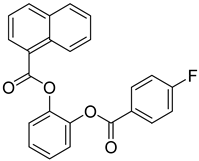 | |
| FZDE | Nicotinic acid | 4.37 | 92.12 | 72.44 |  |
| FHDE | N-(phosphonomethyl) glycine | 4.24 | 96.90 | 56.12 |  |
| α-Chloro-d-alanine | 5.58 | 46.58 | 31.60 |  | |
| Hexadecanoic acid, methyl ester | 24.64 | 56.02 | 5.24 |  | |
| 9-Octadecenoic acid (Z), methyl ester | 27.37 | 37.08 | 1.81 | 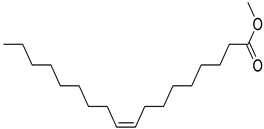 |
| Samples | FADE | FZDE | FHDE | |
|---|---|---|---|---|
| Total phenolics | Absorbance | 1.935 ± 0.52 | 0.974 ± 0.09 | 1.151 ± 0.21 |
| Blank | 0.955 ± 0.11 | 0.324 ± 0.07 | 1.016 ± 0.32 | |
| Concentration (µg/mL) | 506.210 ± 11.03 | 174.105 ± 7.01 | 538.578 ± 17.06 | |
| Total flavonoids | Absorbance | 0.280 ± 0.08 | 0.125 ± 0.07 | 0.215 ± 0.09 |
| Blank | 0.084 ± 0.01 | 0.050 ± 0.01 | 0.117 ± 0.06 | |
| Concentration (µg/mL) | 16.259 ± 1.07 | 3.851 ± 0.91 | 28.481 ± 3.04 | |
| Total tannins | Absorbance | 0.231 ± 0.13 | 0.255 ± 0.09 | 1.002 ± 0.95 |
| Blank | 0.100 ± 0.07 | 0.055 ± 0.01 | 0.122 ± 0.09 | |
| Concentration (µg/mL) | 14.777 ± 2.93 | 2.277 ± 0.98 | 20.888 ± 4.72 | |
| Sample | IC50 (µg/mL) | DPPH Scavenging Activity (%) |
|---|---|---|
| FADE | 12.49 | 47.85 |
| FZDE | 10.45 | 61.75 |
| FHDE | 10.16 | 71.21 |
| Inhibition Zone Diameter (mm) ± SD | ||||
|---|---|---|---|---|
| Antibiotic | Combination With | C. albicans | E. coli | S. aureus |
| Amikacin AK | Alone | 6.0 ± 0.2 | 19.0 ± 0.1 | 6.0 ± 0.6 |
| +FADE | 6.0 ± 0.1 | 23.0 ± 0.2 | 23.0 ± 0.2 | |
| +FZDE | 6.0 ± 0.3 | 24.0 ± 0.2 | 15.0 ± 0.1 | |
| +FHDE | 27.0 ± 0.8 | 30.0 ± 0.5 | 22.0 ± 0.3 | |
| Ampicillin/cloxacillin AX | Alone | 6.0 ± 0.2 | 6.0 ± 0.6 | 6.0 ± 0.5 |
| +FADE | 6.0 ± 0.2 | 14.0 ± 0.2 | 6.0 ± 0.2 | |
| +FZDE | 6.0 ± 0.1 | 6.0 ± 0.9 | 6.0 ± 0.5 | |
| +FHDE | 28.0 ± 0.1 | 6.0 ± 0.7 | 6.0 ± 0.7 | |
| Amoxicillin/clavulanate AMC | Alone | 6.0 ± 0.2 | 6.0 ± 0.5 | 23.0 ± 0.9 |
| +FADE | 6.0 ± 0.7 | 6.0 ± 0.5 | 22.0 ± 0.2 | |
| +FZDE | 6.0 ± 0.8 | 14.0 ± 0.7 | 6.0 ± 0.2 | |
| +FHDE | 20.0 ± 0.3 | 10.0 ± 0.2 | 6.0 ± 0.3 | |
| Gentamicin GEN | Alone | 6.0 ± 0.7 | 16.0 ± 0.2 | 6.0 ± 0.2 |
| +FADE | 6.0 ± 0.2 | 19.0 ± 0.1 | 6.0 ± 0.5 | |
| +FZDE | 6.0 ± 0.3 | 20.0 ± 0.1 | 6.0 ± 0.2 | |
| +FHDE | 20.0 ± 0.1 | 16.0 ± 0.1 | 19.0 ± 0.5 | |
| Cloxacillin COX | Alone | 6.0 ± 0.2 | 6.0 ± 0.5 | 12.0 ± 0.6 |
| +FADE | 6.0 ± 0.1 | 6.0 ± 0.8 | 6.0 ± 0.9 | |
| +FZDE | 6.0 ± 0.3 | 15.0 ± 0.5 | 6.0 ± 0.8 | |
| +FHDE | 22.0 ± 0.3 | 10.0 ± 0.3 | 28.0 ± 0.5 | |
| Ciprofloxacin CIP | Alone | 36.0 ± 0.9 | 38.0 ± 0.4 | 11.0 ± 0.2 |
| +FADE | 6.0 ± 0.5 | 40.0 ± 0.8 | 16.0 ± 0.1 | |
| +FZDE | 6.0 ± 0.8 | 28.0 ± 0.3 | 14.0 ± 0.1 | |
| +FHDE | 36.0 ± 0.3 | 22.0 ± 0.8 | 17.0 ± 0.4 | |
| Oxacillin OX | Alone | 12.0 ± 0.2 | 6.0 ± 0.1 | 6.0 ± 0.5 |
| +FADE | 6.0 ± 0.3 | 11.0 ± 0.2 | 6.0 ± 0.2 | |
| +FZDE | 6.0 ± 0.1 | 11.0 ± 0.2 | 6.0 ± 0.1 | |
| +FHDE | 17.0 ± 0.1 | 6.0 ± 0.1 | 6.0 ± 0.3 | |
| Polymyxin PB | Alone | 14.0 ± 0.9 | 16.0 ± 0.2 | 6.0 ± 0.2 |
| +FADE | 17.0 ± 0.5 | 19.0 ± 0.3 | 6.0 ± 0.2 | |
| +FZDE | 20.0 ± 0.4 | 15.0 ± 0.4 | 6.0 ± 0.9 | |
| +FHDE | 18.0 ± 0.6 | 15.0 ± 0.4 | 17.0 ± 0.8 | |
| Ceftriaxone CTR | Alone | 13.0 ± 0.2 | 35.0 ± 0.1 | 20.0 ± 0.2 |
| +FADE | 6.0 ± 0.2 | 42.0 ± 0.5 | 21.0 ± 0.5 | |
| +FZDE | 6.0 ± 0.1 | 30.0 ± 0.2 | 6.0 ± 0.3 | |
| +FHDE | 15.0 ± 0.2 | 32.0 ± 0.4 | 6.0 ± 0.3 | |
| Cotrimoxazole COT | Alone | 39.0 ± 0.9 | 23.0 ± 0.2 | 6.0 ± 0.2 |
| +FADE | 6.0 ± 0.5 | 32.0 ± 0.6 | 6.0 ± 0.2 | |
| +FZDE | 6.0 ± 0.1 | 20.0 ± 0.8 | 6.0 ± 0.1 | |
| +FHDE | 47.0 ± 0.2 | 25.0 ± 0.5 | 6.0 ± 0.2 | |
| Pathogen | IZ (mm) | MIC (µg/mL) | MBC (µg/mL) | MIC Index |
|---|---|---|---|---|
| Candida albicans | 38 | 25 | 50 | 2 |
| Staphylococcus aureus | 34 | 12.5 | 25 | 2 |
| Microbial Strain | Collection Number |
|---|---|
| Pseudomonas aeruginosa | B24854 |
| Acinetobacter baumannii | B370200 |
| Proteus vulgaris | U98727 |
| Staphylococcus aureus | B236844 |
| Citrobacter freundii | U65813 |
| Escherichia coli | U65814 |
| Enterobacter aerogenes | B370210 |
| Candida albicans | U28732 |
| Klebsiella pneumoniae | BA83700 |
Publisher’s Note: MDPI stays neutral with regard to jurisdictional claims in published maps and institutional affiliations. |
© 2022 by the authors. Licensee MDPI, Basel, Switzerland. This article is an open access article distributed under the terms and conditions of the Creative Commons Attribution (CC BY) license (https://creativecommons.org/licenses/by/4.0/).
Share and Cite
Halabi, A.A.; Elwakil, B.H.; Hagar, M.; Olama, Z.A. Date Fruit (Phoenix dactylifera L.) Cultivar Extracts: Nanoparticle Synthesis, Antimicrobial and Antioxidant Activities. Molecules 2022, 27, 5165. https://doi.org/10.3390/molecules27165165
Halabi AA, Elwakil BH, Hagar M, Olama ZA. Date Fruit (Phoenix dactylifera L.) Cultivar Extracts: Nanoparticle Synthesis, Antimicrobial and Antioxidant Activities. Molecules. 2022; 27(16):5165. https://doi.org/10.3390/molecules27165165
Chicago/Turabian StyleHalabi, Abdulghani Ashraf, Bassma H. Elwakil, Mohamed Hagar, and Zakia A. Olama. 2022. "Date Fruit (Phoenix dactylifera L.) Cultivar Extracts: Nanoparticle Synthesis, Antimicrobial and Antioxidant Activities" Molecules 27, no. 16: 5165. https://doi.org/10.3390/molecules27165165
APA StyleHalabi, A. A., Elwakil, B. H., Hagar, M., & Olama, Z. A. (2022). Date Fruit (Phoenix dactylifera L.) Cultivar Extracts: Nanoparticle Synthesis, Antimicrobial and Antioxidant Activities. Molecules, 27(16), 5165. https://doi.org/10.3390/molecules27165165








